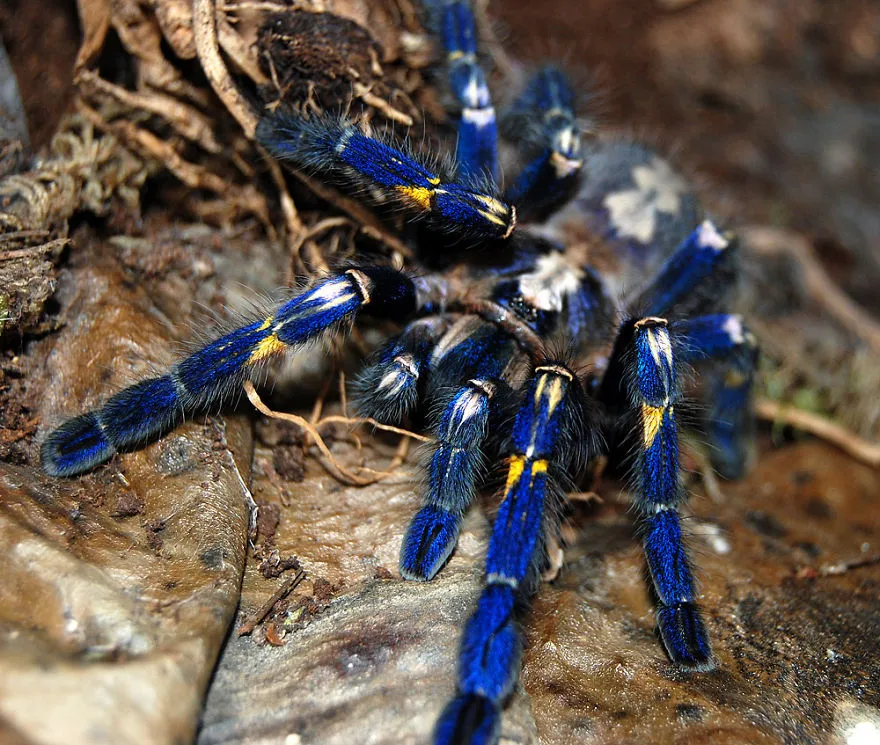What is a Cobalt Blue Tarantula
The Cobalt Blue Tarantula (Cyriopagopus lividus), a striking and captivating species, is a favorite among tarantula enthusiasts. Known for its vibrant, metallic blue coloration, especially prominent on its legs, this tarantula is a sight to behold. Originating from the tropical forests of Myanmar and Thailand, the Cobalt Blue Tarantula has become increasingly popular in the pet trade due to its unique appearance and manageable size. However, potential keepers must be aware of their specific needs and requirements. This guide will cover everything from their habitat and care to their behavior and health, ensuring you’re well-prepared if you’re considering adding one of these stunning creatures to your family. This arachnid, while beautiful, demands respect and responsible ownership, making it a fascinating but demanding pet.
Appearance and Characteristics of Cobalt Blue Tarantulas
The defining feature of the Cobalt Blue Tarantula is, undoubtedly, its striking coloration. Juveniles often exhibit a more muted blue, which intensifies as they mature. The legs are a brilliant, almost electric blue, contrasting beautifully with a darker carapace and abdomen. This coloration serves not only as a stunning visual display but also as a potential warning to predators in their natural habitat. Besides the striking color, Cobalt Blues are relatively fast-growing spiders, reaching a significant size in a few years. Their bodies are generally robust, and they possess potent venom, though their temperament, while defensive, is not typically aggressive. Their fangs are designed for capturing and subduing prey, and though bites are rare, they can be painful. Proper care and handling are crucial to minimizing any potential risk. This exotic creature is a visual treat for any observer.
Size and Lifespan of Cobalt Blue Tarantulas
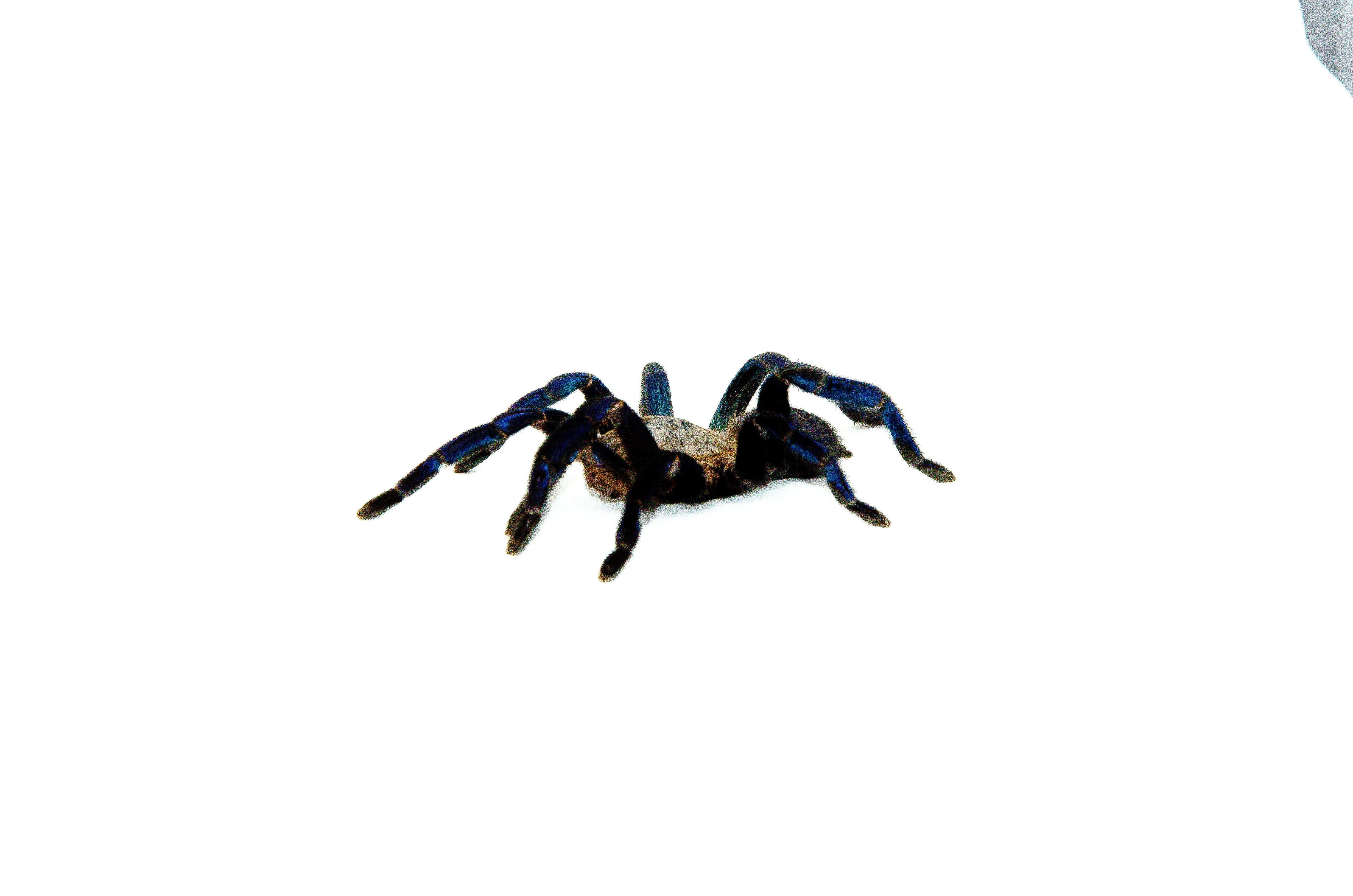
Cobalt Blue Tarantulas have a moderate size, with females typically reaching a leg span of about 5 to 6 inches (12 to 15 cm). Males tend to be slightly smaller. Regarding lifespan, female Cobalt Blues can live for an impressive 10 to 15 years or even longer in optimal conditions, making them a long-term commitment for their owners. Males, however, have a significantly shorter lifespan, usually living only for a few years after reaching maturity. This difference in longevity is a common characteristic among tarantulas, and it’s essential to consider this when deciding to own one. Proper care, including a suitable diet, appropriate enclosure, and environmental conditions, can greatly influence the health and lifespan of your Cobalt Blue Tarantula. Remember, the better the care, the longer you can enjoy the companionship of this fascinating creature.
Habitat and Natural Environment of Cobalt Blue Tarantulas
In their natural habitat, Cobalt Blue Tarantulas are found in the tropical rainforests of Myanmar and Thailand. They are primarily terrestrial, meaning they spend most of their time on the ground. They often burrow in the soil or utilize natural crevices, providing shelter from predators and the elements. The environment is typically humid and warm, with a consistent temperature range throughout the year. The soil composition is often rich with organic matter and leaf litter, which helps retain moisture and supports the tarantula’s burrowing behavior. These tarantulas are also known to be opportunistic hunters, ambushing prey that passes near their burrows. Understanding their natural environment is crucial to replicating it in captivity, ensuring the health and well-being of the tarantula. This includes maintaining appropriate temperature, humidity levels, and providing a suitable substrate for burrowing.
Geographical Distribution of Cobalt Blue Tarantulas
The Cobalt Blue Tarantula is native to Southeast Asia, specifically the countries of Myanmar (Burma) and Thailand. They are primarily found in the tropical rainforest regions of these countries, where the climate is consistently warm and humid. Their distribution is often localized, depending on the availability of suitable habitat, including appropriate soil types and ample food sources. Due to habitat loss and the increasing popularity of these tarantulas in the pet trade, conservation efforts are essential to protect their natural populations. While captive breeding programs help to meet the demand and reduce pressure on wild populations, understanding their geographical distribution helps in the design of effective conservation strategies. It also provides valuable insights into the specific environmental factors that contribute to their survival.
Behavior and Temperament of Cobalt Blue Tarantulas
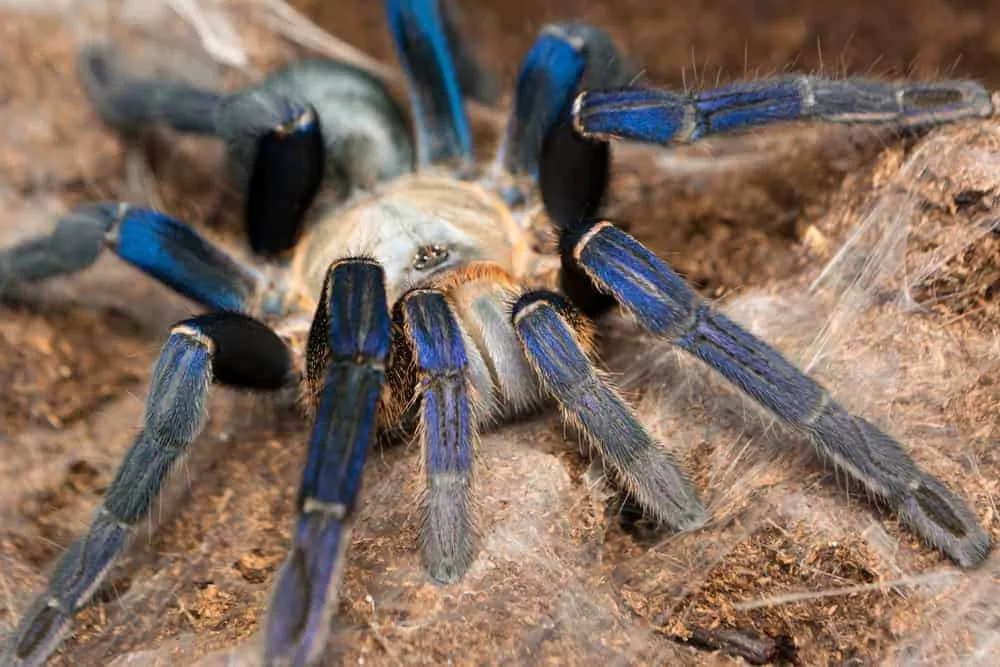
Cobalt Blue Tarantulas are known for their defensive temperament. While they are not typically aggressive, they can be skittish and may display defensive behaviors if they feel threatened. These behaviors include raising their front legs, hissing, and flicking urticating hairs (small hairs that cause irritation) from their abdomen. Bites are rare, but can happen if provoked. They are generally nocturnal creatures, active during the night and resting during the day. They are also fast movers, capable of swift movement if they perceive danger. Handling should be kept to a minimum to reduce stress, and handling should always be done with caution. Careful observation of the tarantula’s behavior can help you understand its mood and avoid any potential conflict. This understanding is crucial for responsible ownership.
Diet and Feeding Habits of Cobalt Blue Tarantulas
In the wild, Cobalt Blue Tarantulas are opportunistic predators, feeding on insects, small invertebrates, and sometimes even small vertebrates. In captivity, they are typically fed a diet consisting of live insects, such as crickets, roaches, mealworms, and occasionally, small spiders. The frequency of feeding depends on the tarantula’s size and age, with juveniles needing more frequent meals than adults. It’s important to ensure that the prey is appropriately sized to avoid any risk to the tarantula. Leftover food should be removed to maintain a clean environment and prevent any potential health issues. A varied diet provides essential nutrients for the tarantula’s health and growth. Proper feeding habits are vital to the well-being of your Cobalt Blue Tarantula, and maintaining the right balance of feeding frequency and prey size is key to its health.
Cobalt Blue Tarantula in Captivity Care Tips
Caring for a Cobalt Blue Tarantula in captivity requires careful attention to its specific needs. Providing a suitable enclosure, maintaining the correct temperature and humidity levels, and offering an appropriate diet are essential. Regular cleaning of the enclosure is crucial to prevent the buildup of waste and mold. Handling should be kept to a minimum, as these tarantulas can be skittish and may display defensive behaviors. Always be cautious when handling, and avoid any sudden movements or actions that might provoke the spider. Monitor your tarantula for any signs of illness or stress, and consult with a veterinarian or experienced tarantula keeper if you notice any problems. With proper care and attention, Cobalt Blue Tarantulas can thrive in captivity, offering an exciting and rewarding pet-keeping experience.
Enclosure Requirements for Cobalt Blue Tarantulas
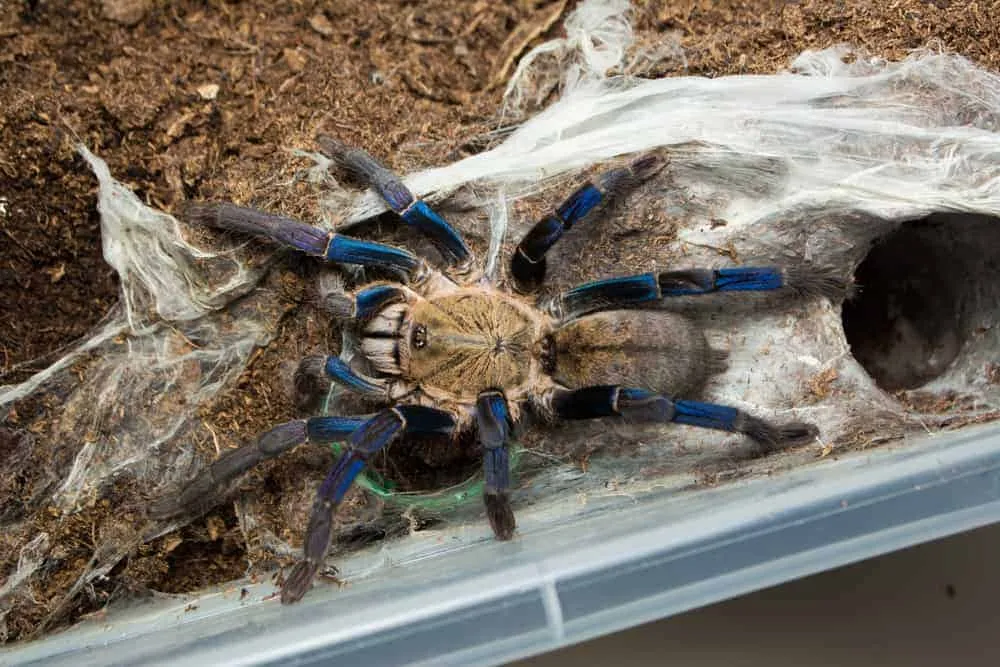
The enclosure for a Cobalt Blue Tarantula should be appropriately sized, considering the tarantula’s adult size. A good rule of thumb is to provide an enclosure that is at least three times the leg span of the tarantula in length and width. The height of the enclosure should allow for burrowing space. The enclosure should be secure, with a tight-fitting lid to prevent escape. The substrate should be deep enough for burrowing, usually a mix of peat moss, vermiculite, and a little bit of coco fiber. This substrate will help retain moisture and provide a suitable environment. Ensure the enclosure has adequate ventilation to prevent mold growth and maintain air quality. The enclosure is the tarantula’s home, and its design will have a great impact on its health and well-being. Regular maintenance, including spot cleaning and substrate changes, is essential to keep the enclosure clean and healthy.
Temperature and Humidity for Cobalt Blue Tarantulas
Maintaining the correct temperature and humidity levels is critical for the health of a Cobalt Blue Tarantula. The ideal temperature range is generally between 75 to 85 degrees Fahrenheit (24 to 29 degrees Celsius). This can usually be achieved in a standard room, but a heat mat can be used if necessary. Humidity levels should be kept between 60-70%, which can be maintained by misting the enclosure regularly. Use a hygrometer to monitor the humidity levels and adjust as needed. Proper temperature and humidity are essential for the tarantula’s molting process, as well as its overall health and well-being. Insufficient humidity can lead to molting problems, and too much moisture can lead to mold growth. The goal is to replicate the natural environment as closely as possible to keep your pet healthy.
Feeding and Watering of Cobalt Blue Tarantulas
Feeding and watering are fundamental aspects of Cobalt Blue Tarantula care. Offer a variety of live insects, such as crickets, roaches, and mealworms, and adjust the size of the prey to the size of the tarantula. Juveniles typically need feeding more frequently than adults. Remove any uneaten food to prevent mold growth. Provide a shallow water dish with fresh water at all times. Ensure the water dish is shallow enough to prevent the tarantula from drowning. Mist the enclosure to maintain humidity, and provide drinking water as needed. The right feeding and watering practices keep the tarantula healthy and well-hydrated. Observing your tarantula’s feeding habits and adjusting the feeding schedule accordingly can greatly enhance its well-being.
Health and Common Issues for Cobalt Blue Tarantulas
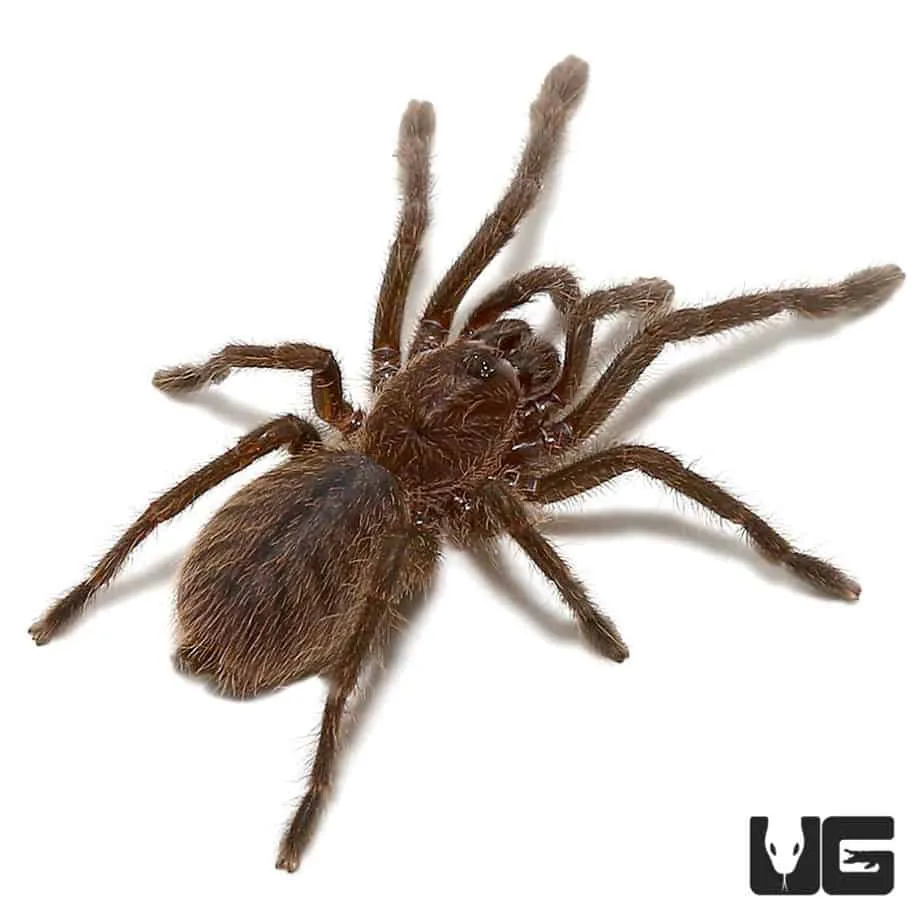
Like any pet, Cobalt Blue Tarantulas can experience health problems. Common issues include molting problems, mite infestations, and injuries. Molting problems can be caused by incorrect humidity levels, while mites can be introduced through the substrate or live prey. Injuries can occur during feeding or handling. It’s essential to recognize the signs of these issues, which may include lethargy, loss of appetite, or unusual behavior. Prevention includes maintaining the correct environmental conditions, quarantining new insects before feeding, and handling the tarantula with care. Consult an experienced keeper or a veterinarian if you have concerns about your tarantula’s health. Early detection and treatment of potential health problems can significantly improve your tarantula’s chances of survival and well-being.
Conclusion
The Cobalt Blue Tarantula is a striking and captivating species, but their care requires knowledge and commitment. By understanding their habitat, behavior, and specific needs, you can provide a thriving environment for this unique pet. From enclosure requirements and maintaining the correct temperature and humidity levels, to proper feeding and handling, every aspect contributes to the tarantula’s overall well-being. Responsible ownership also includes a proactive approach to identifying and managing potential health issues. While their vibrant coloration is a major draw, the satisfaction of caring for such an exotic and beautiful creature comes with a responsibility to provide the best possible care. With the right knowledge and dedication, owning a Cobalt Blue Tarantula can be a fascinating and rewarding experience.
